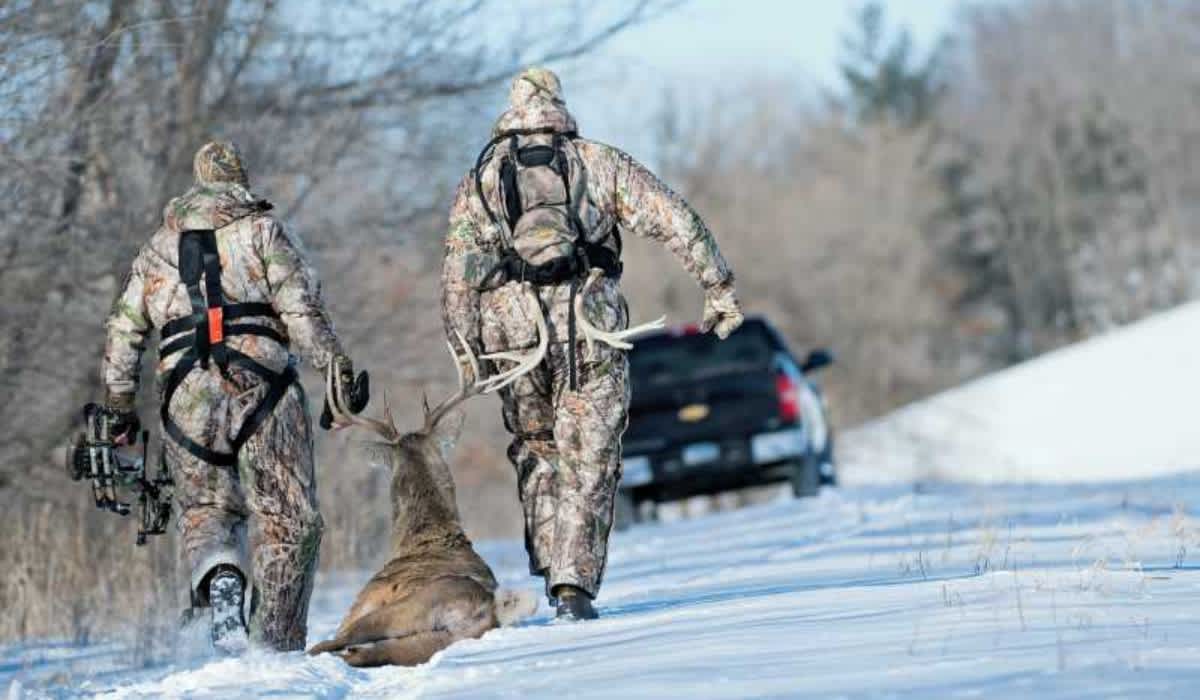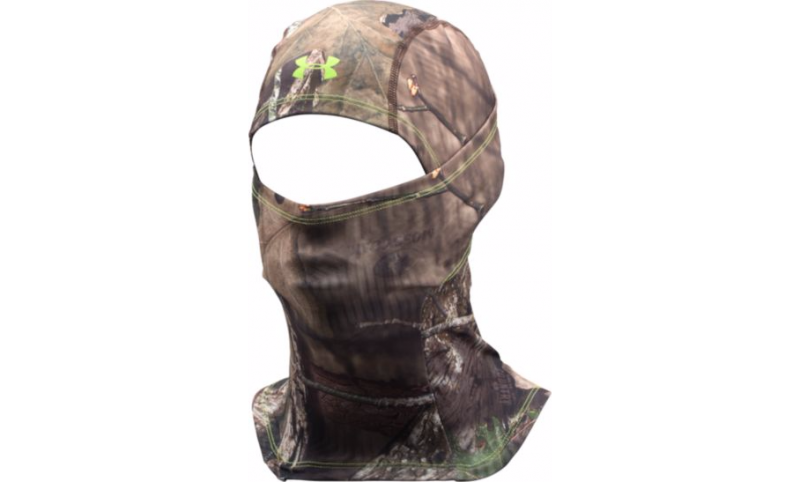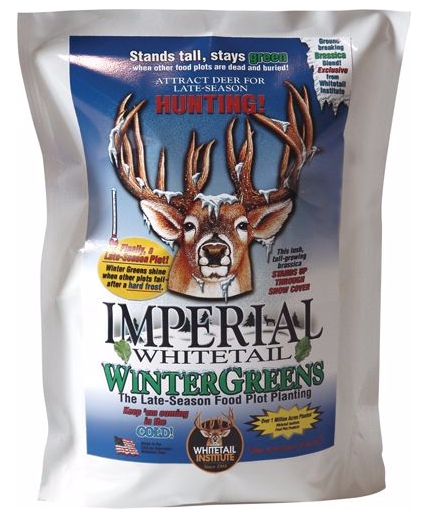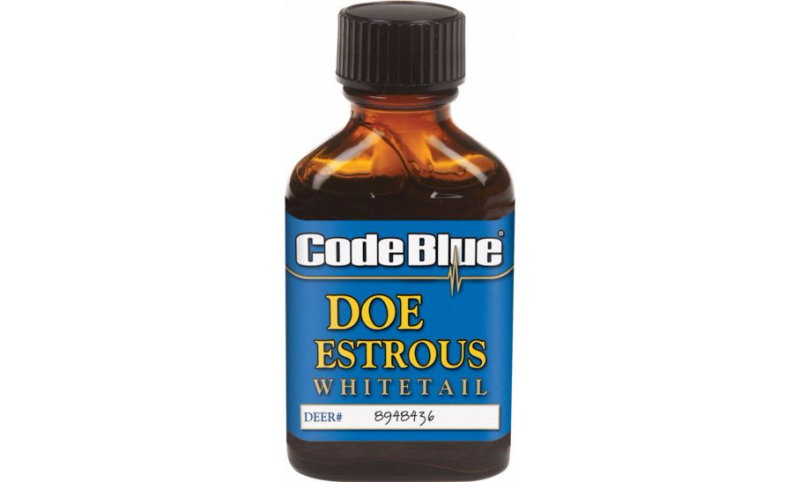3 Tips for Tagging a Late-Season Whitetail
Dave Maas 12.07.17

Deer season is still going strong throughout much of North America, and if you still have an open tag, it’s time to get off the couch and into a treestand or ground blind. Under certain conditions, the late season can be your best chance at a mature buck — provided you keep in mind the three tips below.
- Avoid the Brain Freeze
When temperatures drop, you must stay warm on stand, otherwise you can’t stay in the field long enough to punch your tag. I find that if I can keep my neck and head warm, the rest of my body does pretty well, too. I rely on this system: Cabela’s Camoskinz neck gaiter (below), which is comfortable and not bulky. Neck gaiters that don’t fit close to my skin interfere as I struggle to find my anchor point after drawing my bow; this one is perfect.

Next, I wear an Under Armour ColdGear Infrared Scent Control Hood (below). I’m careful to pull the base of the hood over the top of my neck gaiter; it locks in the warmth. I slide the facemask part of this hood down from my nose and mouth while walking to my stand; I place it over my face after I’m set in the tree and waiting on a whitetail. Not only does this hood keep my face, neck, head and ears warm, but it also doesn’t interfere when shooting my bow.

Finally, I top off my head/neck system with two hats — yes, two — it gets cold in my home state of Minnesota! First, I place the thin Cabela’s Stretch Beanie over the top of my Under Armour hood, and then over that I wear a Cabela’s Wootimate Stu Cap (below). This hat is great because it provides additional warmth, and the short visor shields my eyes from the rising and setting sun.

- Find the Best Food
Depending on where you pursue whitetails, late-season food sources can vary widely. In the Midwest, I look for unpicked soybeans, picked or standing corn (cut cornfields typically don’t have any kernels remaining for deer), or food plots containing brassicas.

On my South Dakota property, I planted an acre of Whitetail Institute WinterGreens, and as the photo below shows, my two sons tagged their deer on this brassica field during a special youth-only season for antlerless deer. It’s a magnet for late-season whitetails. After the first frost, deer begin hammering the sweet-tasting green foliage, then they turn their attention to the bulbs after the tops are gone.

- Get a Little Pushy
As the deer season winds down, don’t be afraid to go “all in” and conduct well-planned deer pushes. I hesitate to use the word “drives” because you don’t want to send whitetails flying by someone in a stand. Instead, you want to gently push deer toward waiting hunters. With a bit of practice, you’ll begin to learn where deer like to travel when disturbed, so use this to your advantage. Don’t try to push deer a direction they don’t want to go.
You don’t need an army to conduct a push. One person pushing and one or two hunters waiting on stand is sufficient. As the person pushing, you should move slowly with the wind at your back. A crosswind works, too. Trying to push deer into the wind rarely works because whitetails will smell the hunters on stand.
Tip for hunters waiting on stand: Place some Code Blue Doe Estrous Urine in the trail before climbing into your stand or ground blind. As bucks and does move down the trail, they’ll stop to investigate the scent, giving you a broadside shot at a stopped deer.

This article was produced in cooperation with Cabela’s.

